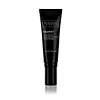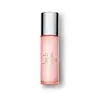What's inside
What's inside
 Key Ingredients
Key Ingredients

 Benefits
Benefits

 Concerns
Concerns

 Ingredients Side-by-side
Ingredients Side-by-side

Water
Skin ConditioningGlycerin
HumectantTricaprylin
MaskingCetyl Esters
EmollientCanarium Indicum Seed Oil
Skin ConditioningCocos Nucifera Fruit Extract
EmollientC12-15 Alkyl Benzoate
AntimicrobialGlyceryl Stearate Citrate
EmollientCetearyl Alcohol
EmollientDimethicone
EmollientSqualane
EmollientGlyceryl Stearate
EmollientPEG-100 Stearate
Methylsilanol Carboxymethyl Theophylline Alginate
Skin ConditioningHordeum Distichon Extract
Skin ProtectingYeast Extract
Skin ConditioningSantalum Album Extract
CleansingPrunus Amygdalus Dulcis Seed Extract
Skin ConditioningPhellodendron Amurense Bark Extract
Skin ConditioningPalmitoyl Tripeptide-5
Skin ConditioningLauryl Lactate
EmollientSteareth-10
EmulsifyingCeramide Ng
Skin ConditioningDihydromyricetin
Skin ConditioningPalmitoyl Tetrapeptide-7
Skin ConditioningEnteromorpha Compressa Extract
Skin ProtectingTripleurospermum Maritimum Extract
Skin ProtectingPalmitoyl Dipeptide-5 Diaminobutyroyl Hydroxythreonine
Skin ConditioningBambusa Vulgaris Leaf/Stem Extract
HumectantSteareth-20
CleansingHydroxyethyl Acrylate/Sodium Acryloyldimethyl Taurate Copolymer
Emulsion StabilisingPalmitoyl Hexapeptide-12
Skin ConditioningPisum Sativum Extract
Skin ConditioningTocopherol
AntioxidantPolysorbate 60
EmulsifyingButylene Glycol
HumectantGlucosamine Hcl
Tetrahexyldecyl Ascorbate
AntioxidantPEG-10 Phytosterol
EmulsifyingTetradecyl Aminobutyroylvalylaminobutyric Urea Trifluoroacetate
Skin ConditioningTriethanolamine
BufferingCaprylyl Glycol
EmollientTribehenin
EmollientDiazolidinyl Urea
PreservativeCarbomer
Emulsion StabilisingDisodium EDTA
Xanthan Gum
EmulsifyingIodopropynyl Butylcarbamate
PreservativePotassium Sorbate
PreservativeMagnesium Chloride
Sodium Benzoate
MaskingSorbic Acid
PreservativeParfum
MaskingWater, Glycerin, Tricaprylin, Cetyl Esters, Canarium Indicum Seed Oil, Cocos Nucifera Fruit Extract, C12-15 Alkyl Benzoate, Glyceryl Stearate Citrate, Cetearyl Alcohol, Dimethicone, Squalane, Glyceryl Stearate, PEG-100 Stearate, Methylsilanol Carboxymethyl Theophylline Alginate, Hordeum Distichon Extract, Yeast Extract, Santalum Album Extract, Prunus Amygdalus Dulcis Seed Extract, Phellodendron Amurense Bark Extract, Palmitoyl Tripeptide-5, Lauryl Lactate, Steareth-10, Ceramide Ng, Dihydromyricetin, Palmitoyl Tetrapeptide-7, Enteromorpha Compressa Extract, Tripleurospermum Maritimum Extract, Palmitoyl Dipeptide-5 Diaminobutyroyl Hydroxythreonine, Bambusa Vulgaris Leaf/Stem Extract, Steareth-20, Hydroxyethyl Acrylate/Sodium Acryloyldimethyl Taurate Copolymer, Palmitoyl Hexapeptide-12, Pisum Sativum Extract, Tocopherol, Polysorbate 60, Butylene Glycol, Glucosamine Hcl, Tetrahexyldecyl Ascorbate, PEG-10 Phytosterol, Tetradecyl Aminobutyroylvalylaminobutyric Urea Trifluoroacetate, Triethanolamine, Caprylyl Glycol, Tribehenin, Diazolidinyl Urea, Carbomer, Disodium EDTA, Xanthan Gum, Iodopropynyl Butylcarbamate, Potassium Sorbate, Magnesium Chloride, Sodium Benzoate, Sorbic Acid, Parfum
Water
Skin ConditioningGlycerin
HumectantNiacinamide
SmoothingBiosaccharide Gum-4
Skin ConditioningCocoglycerides
EmollientPropanediol
SolventIsododecane
EmollientPentylene Glycol
Skin ConditioningDimethicone
Emollient3-O-Ethyl Ascorbic Acid
Skin ConditioningOligopeptide-20
Skin ConditioningAcetyl Hexapeptide-8
HumectantOligopeptide-24
Skin ConditioningPentapeptide-4
Skin ConditioningHeptapeptide-15 Palmitate
Skin ConditioningD-Arginyl Tyrosinyl Ornithinyl Phenylalanine
Skin ConditioningCopper Heptapeptide-14 Pantothenate
Skin ConditioningCaesalpinia Spinosa Fruit Extract
Skin ProtectingTocopherol
AntioxidantGlycyrrhiza Glabra Root Extract
BleachingCamellia Sinensis Leaf Extract
AntimicrobialAvena Sativa Kernel Oil
Skin ConditioningAllantoin
Skin ConditioningKappaphycus Alvarezii Extract
Skin ConditioningTocopheryl Acetate
AntioxidantAlgin
MaskingPichia Ferment Lysate Filtrate
HumectantAlpha-Glucan Oligosaccharide
CleansingPullulan
Hydrolyzed Jojoba Esters
Skin ConditioningSodium Oleate
CleansingGlycine Soja Oil
EmollientHydrogenated Lecithin
EmulsifyingParfum
MaskingLactic Acid/Glycolic Acid Copolymer
Skin ConditioningHydrogenated Phosphatidylcholine
EmulsifyingUbiquinone
AntioxidantDextran
Acrylates/Dimethicone Copolymer
Skin ConditioningEthylhexylglycerin
Skin ConditioningAcrylates/C10-30 Alkyl Acrylate Crosspolymer
Emulsion StabilisingMaltodextrin
AbsorbentPhenoxyethanol
PreservativePotassium Hydroxide
BufferingSodium Stearoyl Glutamate
CleansingSodium Phytate
Disodium EDTA
Potassium Sorbate
PreservativePolyvinyl Alcohol
Water, Glycerin, Niacinamide, Biosaccharide Gum-4, Cocoglycerides, Propanediol, Isododecane, Pentylene Glycol, Dimethicone, 3-O-Ethyl Ascorbic Acid, Oligopeptide-20, Acetyl Hexapeptide-8, Oligopeptide-24, Pentapeptide-4, Heptapeptide-15 Palmitate, D-Arginyl Tyrosinyl Ornithinyl Phenylalanine, Copper Heptapeptide-14 Pantothenate, Caesalpinia Spinosa Fruit Extract, Tocopherol, Glycyrrhiza Glabra Root Extract, Camellia Sinensis Leaf Extract, Avena Sativa Kernel Oil, Allantoin, Kappaphycus Alvarezii Extract, Tocopheryl Acetate, Algin, Pichia Ferment Lysate Filtrate, Alpha-Glucan Oligosaccharide, Pullulan, Hydrolyzed Jojoba Esters, Sodium Oleate, Glycine Soja Oil, Hydrogenated Lecithin, Parfum, Lactic Acid/Glycolic Acid Copolymer, Hydrogenated Phosphatidylcholine, Ubiquinone, Dextran, Acrylates/Dimethicone Copolymer, Ethylhexylglycerin, Acrylates/C10-30 Alkyl Acrylate Crosspolymer, Maltodextrin, Phenoxyethanol, Potassium Hydroxide, Sodium Stearoyl Glutamate, Sodium Phytate, Disodium EDTA, Potassium Sorbate, Polyvinyl Alcohol
Ingredients Explained
These ingredients are found in both products.
Ingredients higher up in an ingredient list are typically present in a larger amount.
Dimethicone is a type of synthetic silicone created from natural materials such as quartz.
What it does:
Dimethicone comes in different viscosities:
Depending on the viscosity, dimethicone has different properties.
Ingredients lists don't always show which type is used, so we recommend reaching out to the brand if you have questions about the viscosity.
This ingredient is unlikely to cause irritation because it does not get absorbed into skin. However, people with silicone allergies should be careful about using this ingredient.
Note: Dimethicone may contribute to pilling. This is because it is not oil or water soluble, so pilling may occur when layered with products. When mixed with heavy oils in a formula, the outcome is also quite greasy.
Learn more about DimethiconeDisodium EDTA plays a role in making products more stable by aiding other preservatives.
It is a chelating agent, meaning it neutralizes metal ions that may be found in a product.
Disodium EDTA is a salt of edetic acid and is found to be safe in cosmetic ingredients.
Learn more about Disodium EDTAGlycerin is already naturally found in your skin. It helps moisturize and protect your skin.
A study from 2016 found glycerin to be more effective as a humectant than AHAs and hyaluronic acid.
As a humectant, it helps the skin stay hydrated by pulling moisture to your skin. The low molecular weight of glycerin allows it to pull moisture into the deeper layers of your skin.
Hydrated skin improves your skin barrier; Your skin barrier helps protect against irritants and bacteria.
Glycerin has also been found to have antimicrobial and antiviral properties. Due to these properties, glycerin is often used in wound and burn treatments.
In cosmetics, glycerin is usually derived from plants such as soybean or palm. However, it can also be sourced from animals, such as tallow or animal fat.
This ingredient is organic, colorless, odorless, and non-toxic.
Glycerin is the name for this ingredient in American English. British English uses Glycerol/Glycerine.
Learn more about GlycerinParfum is a catch-all term for an ingredient or more that is used to give a scent to products.
Also called "fragrance", this ingredient can be a blend of hundreds of chemicals or plant oils. This means every product with "fragrance" or "parfum" in the ingredients list is a different mixture.
For instance, Habanolide is a proprietary trade name for a specific aroma chemical. When used as a fragrance ingredient in cosmetics, most aroma chemicals fall under the broad labeling category of “FRAGRANCE” or “PARFUM” according to EU and US regulations.
The term 'parfum' or 'fragrance' is not regulated in many countries. In many cases, it is up to the brand to define this term.
For instance, many brands choose to label themselves as "fragrance-free" because they are not using synthetic fragrances. However, their products may still contain ingredients such as essential oils that are considered a fragrance by INCI standards.
One example is Calendula flower extract. Calendula is an essential oil that still imparts a scent or 'fragrance'.
Depending on the blend, the ingredients in the mixture can cause allergies and sensitivities on the skin. Some ingredients that are known EU allergens include linalool and citronellol.
Parfum can also be used to mask or cover an unpleasant scent.
The bottom line is: not all fragrances/parfum/ingredients are created equally. If you are worried about fragrances, we recommend taking a closer look at an ingredient. And of course, we always recommend speaking with a professional.
Learn more about ParfumPotassium Sorbate is a preservative used to prevent yeast and mold in products. It is commonly found in both cosmetic and food products.
This ingredient comes from potassium salt derived from sorbic acid. Sorbic acid is a natural antibiotic and effective against fungus.
Both potassium sorbate and sorbic acid can be found in baked goods, cheeses, dried meats, dried fruit, ice cream, pickles, wine, yogurt, and more.
You'll often find this ingredient used with other preservatives.
Learn more about Potassium SorbateTocopherol (also known as Vitamin E) is a common antioxidant used to help protect the skin from free-radicals and strengthen the skin barrier. It's also fat soluble - this means our skin is great at absorbing it.
Vitamin E also helps keep your natural skin lipids healthy. Your lipid skin barrier naturally consists of lipids, ceramides, and fatty acids. Vitamin E offers extra protection for your skin’s lipid barrier, keeping your skin healthy and nourished.
Another benefit is a bit of UV protection. Vitamin E helps reduce the damage caused by UVB rays. (It should not replace your sunscreen). Combining it with Vitamin C can decrease sunburned cells and hyperpigmentation after UV exposure.
You might have noticed Vitamin E + C often paired together. This is because it is great at stabilizing Vitamin C. Using the two together helps increase the effectiveness of both ingredients.
There are often claims that Vitamin E can reduce/prevent scarring, but these claims haven't been confirmed by scientific research.
Learn more about TocopherolWater. It's the most common cosmetic ingredient of all. You'll usually see it at the top of ingredient lists, meaning that it makes up the largest part of the product.
So why is it so popular? Water most often acts as a solvent - this means that it helps dissolve other ingredients into the formulation.
You'll also recognize water as that liquid we all need to stay alive. If you see this, drink a glass of water. Stay hydrated!
Learn more about Water